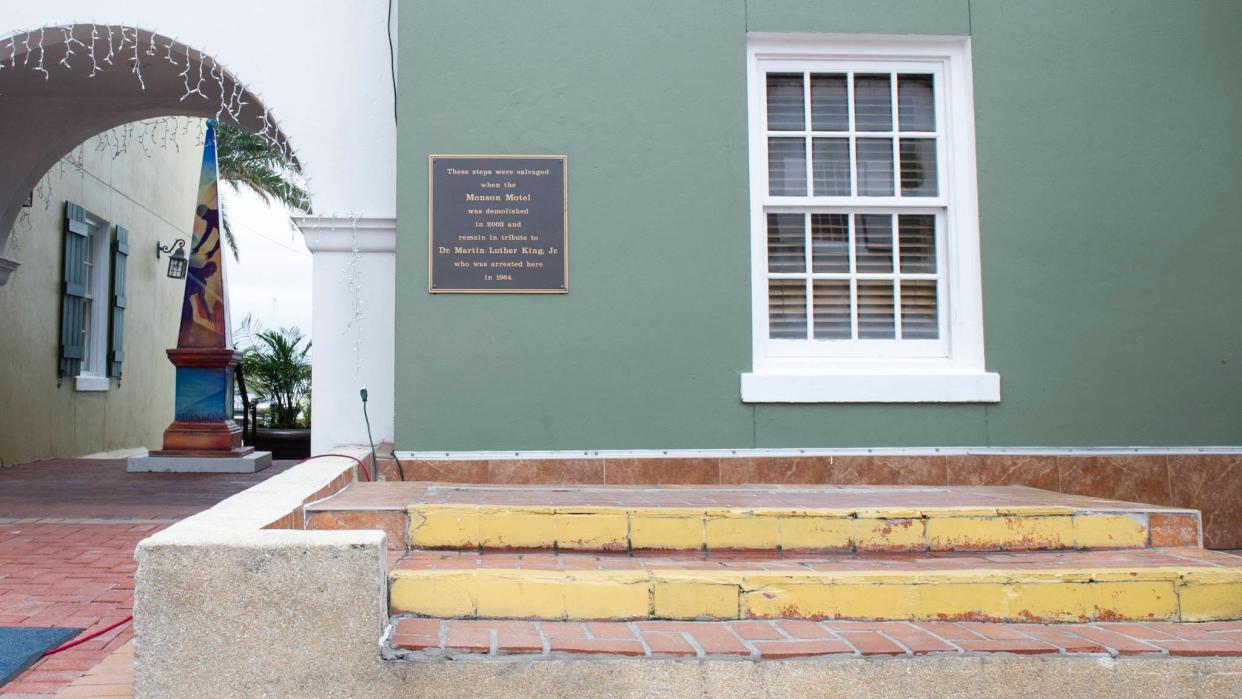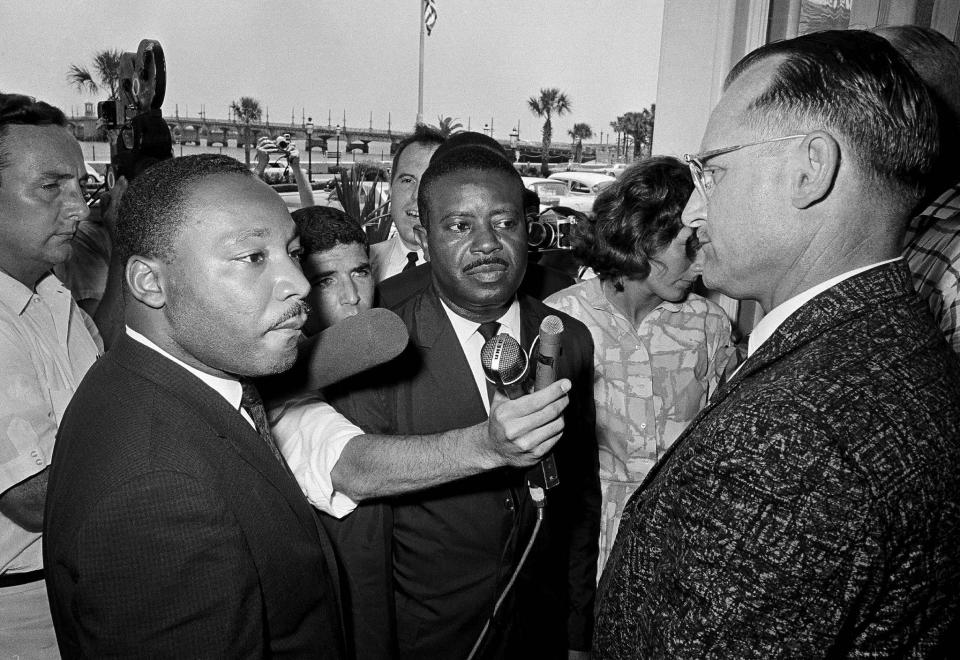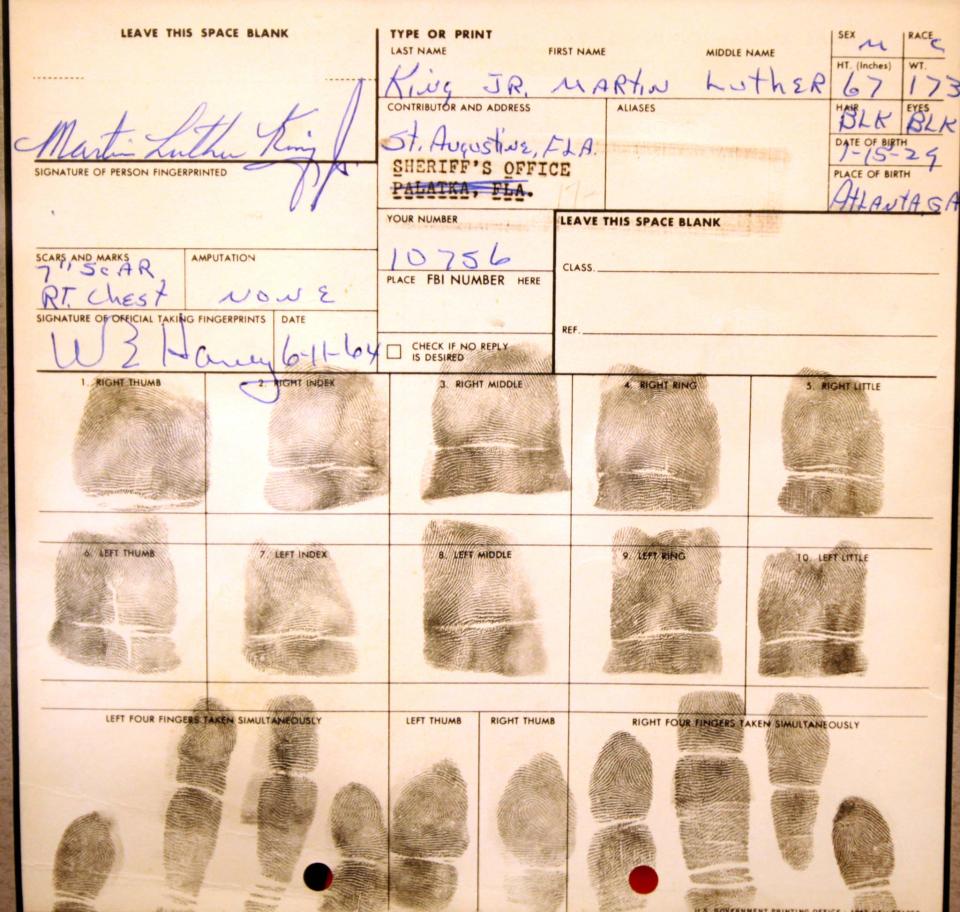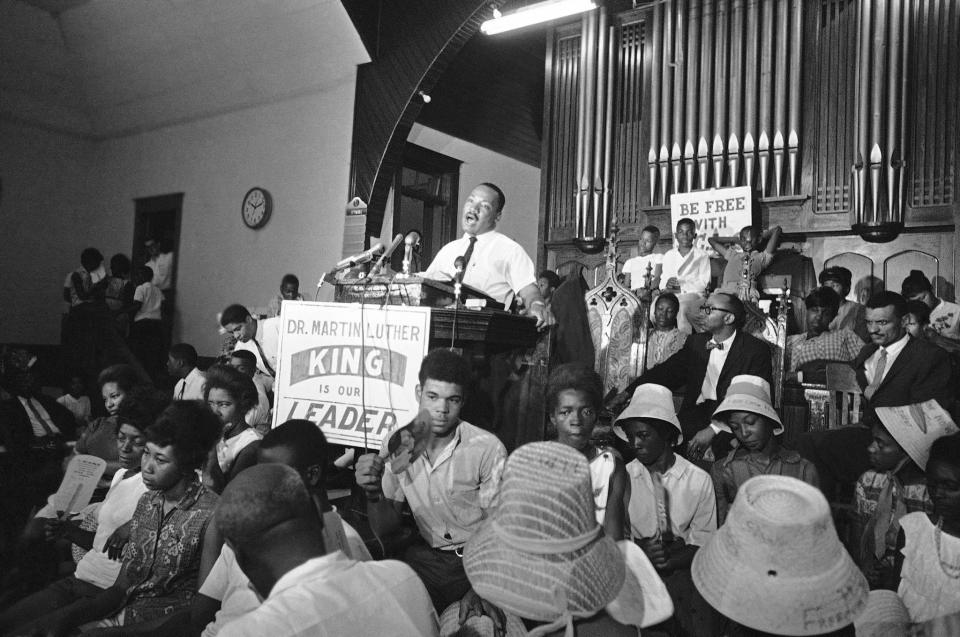IN KING'S FOOTSTEPS: St. Augustine-area sites are connected to Dr. Martin Luther King Jr.

- Oops!Something went wrong.Please try again later.
Cities across the United States have streets and sites honoring the late civil rights leader, Dr. Martin Luther King Jr.
St. Augustine is one of them.
But unlike many of those other cities, much of King’s legacy is actually connected to St. Augustine.
During an interview in 2015, Lincolnville resident Cora Tyson waved at a tourist trolley passing by as the driver told his passengers about her.
Hers is one of several homes in town where King stayed while in St. Augustine. A marker in her yard from the nonprofit group the Anniversary to Commemorate the Civil Rights Demonstrations describes the history.
Many important sites remain that are tied to King’s time in St. Augustine and surrounding areas, including several highlighted by Dalonja Duncan, president of ACCORD.
Monson Motor Lodge

Many believe the demonstrations that took place at this business, and the press that followed, helped push along passage of the Civil Rights Act.
One of the most famous images from the St. Augustine movement is of hotel owner James Brock pouring acid into the whites-only pool after black activists jumped in on June, 18, 1964.
But about a week before that happened, King was one of several people arrested for taking part in an attempted sit-in at the segregated lodge. The Bayfront Hilton, which is on the site today, preserved the steps where King was arrested.
King came to St. Augustine after being persuaded that it would be a good place to further expose racism in America with its plethora of segregated hotels, motels and restaurants, historian David Nolan said.
5480 Atlantic View cottage, St. Augustine Beach

Another iconic photo from the movement shows King pointing to a bullet hole in the window of this cottage, according to information from ACCORD.
It was the winter home of missionaries who supported the civil rights movement, who opened the house to King, according to information from ACCORD. Segregationists twice attacked the site, once shooting at it and also trying to burn it in 1964 and painted “racist graffiti inside.” Other members of the Southern Christian Leadership Conference also visited or stayed at the home.

King faced many dangers while in St. Augustine. While he traveled back and forth to St. Augustine as part of his fight for civil rights, he was here when he learned that the Civil Rights Act passed.
“We have a photo of him giving ‘V’ for victory (with his fingers),” Nolan said.
St. Johns County jail

Police brought civil rights activists, including King and many others, to the jail. A photo of King’s fingerprints from the St. Johns County Sheriff’s Office had been on display in Florida House chambers in 2011.
“While many notable people came from outside to support the civil rights movement here, the largest number of those arrested were local residents—the ‘foot soldiers’ of the movement—whom Dr. King hailed as ‘the heroes of St. Augustine,’ according to information from ACCORD. “They displayed extraordinary courage in standing up against racial segregation, and their example helped to change America and inspire the world.”
81 Bridge St.

Cora Tyson’s home wasn’t just one of King’s places of refuge. It was also a place where civil rights activists met and also got a bite to eat thanks to Tyson.
“He loved iced tea, and I always kept iced tea in the freezer for him,” Tyson said in a previous interview with The Record.
The family Bible bears the signatures of several of the people who visited, including King.
Other people hosted King and other Southern Christian Leadership Conference members in their homes during the movement.
Because it wasn’t safe for King to stay at one place, his colleagues would sometimes take him into the front of a house only to lead him out the back door toward another home.
“So that people who wanted to do him harm would not see where he was,” Nolan said.
St. Paul AME Church

The church is at 85 Dr. Martin Luther King Jr. Ave. in Lincolnville, on a street that was Central Avenue when King walked on it.
King spoke at this church during the civil rights movement, as did Jackie Robinson. Hundreds or more attended rallies at the church and also marched to the Plaza de la Constitucion in downtown St. Augustine to push for civil rights.
As people met at churches in the area, they encouraged each other before they marched, said Gayle Phillips, program director of the Linconlville Museum and Cultural Center.
“They had regular meetings and prayer before they went out,” Phillips said.
Because he was a target, it was dangerous for King to be out in a march for more than a few steps, Nolan said.
When King first came to St. Augustine, there wasn’t a church large enough for the crowds he drew, so two rallies were held simultaneously: One at St. Paul AME church and one at First Baptist Church nearby, Nolan said. King went from one church to another after his speech.
People who walked to the Plaza to march for civil rights suffered serious injuries, including broken bones.
“I think [King] was taken aback at how much violence there was (in St. Augustine),” Nolan said.
This article originally appeared on St. Augustine Record: IN KING'S FOOTSTEPS: St. Augustine-area sites are connected to Dr. Martin Luther King Jr.

